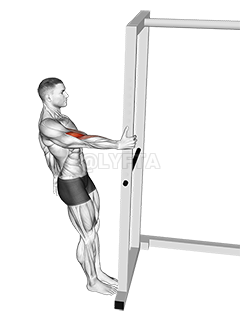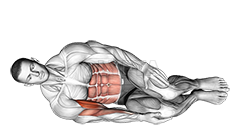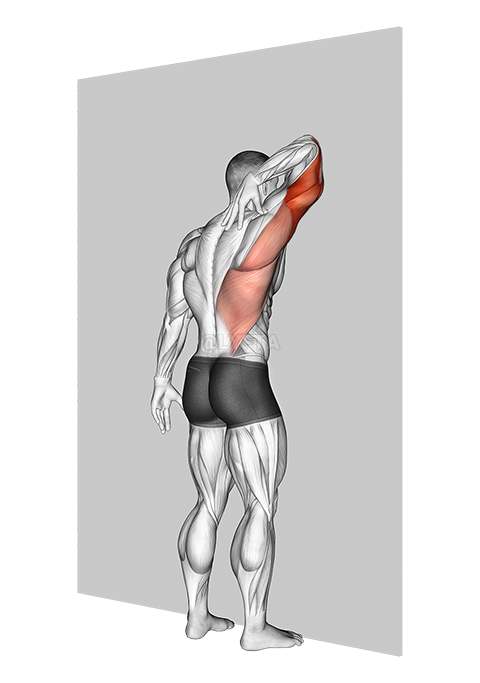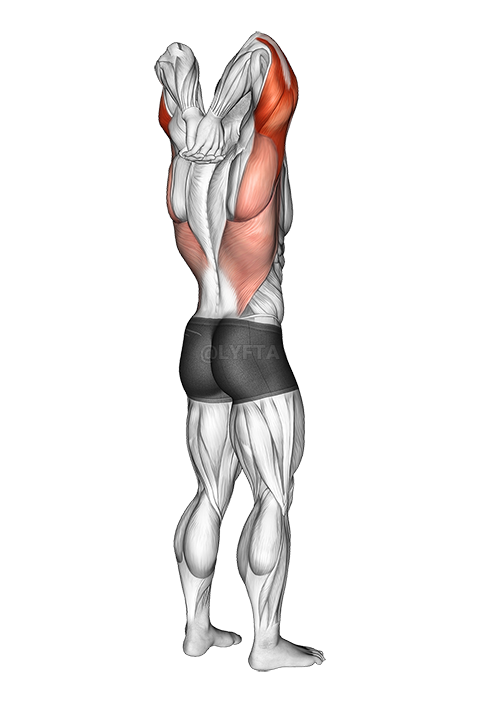
Bodyweight Standing Biceps Curl
Exercise Profile
Related Exercises:
Introduction to the Bodyweight Standing Biceps Curl
The Bodyweight Standing Biceps Curl is a strength-building exercise that targets the biceps and promotes upper body muscle endurance. It's ideal for individuals at any fitness level, especially those who prefer workouts that can be done without gym equipment. People would want to do this exercise because it improves muscle tone, enhances arm strength, and can be conveniently performed anywhere, making it a great addition to any home workout routine.
Performing the: A Step-by-Step Tutorial Bodyweight Standing Biceps Curl
- Slowly bend your elbows to lift your hands towards your shoulders, keeping your elbows close to your body and ensuring that only your forearms are moving.
- Squeeze your biceps at the top of the movement for a moment to maximize the contraction.
- Gradually lower your hands back to the starting position, fully extending your arms and stretching your biceps.
- Repeat this process for your desired number of repetitions, maintaining control and proper form throughout the exercise.
Tips for Performing Bodyweight Standing Biceps Curl
- Control Your Movements: When performing this exercise, it's crucial to control your movements. Do not use momentum or swing your body to lift the weight. Instead, use your biceps to pull your body up and control the lowering phase as well. This ensures that your muscles are doing the work and not your joints.
- Keep Your Elbows Close: Another common mistake people make is flaring their elbows out to the sides. Your elbows should stay close to your body throughout the exercise. This helps isolate the biceps and makes the exercise more effective.
- Breathe Correctly: Breathing is also very important when performing any exercise. Inhale as you lower your body
Bodyweight Standing Biceps Curl FAQs
Can beginners do the Bodyweight Standing Biceps Curl?
Yes, beginners can do the Bodyweight Standing Biceps Curl exercise. However, it's important to start with a lighter weight and gradually increase it as you get stronger. Also, proper form is crucial to avoid injury and to ensure the exercise is effective. It may be beneficial for beginners to perform the exercise under the guidance of a fitness professional to ensure correct technique.
What are common variations of the Bodyweight Standing Biceps Curl?
- Towel Bicep Curl: In this version, you use a towel wrapped around a sturdy pole or post, pulling towards your body to engage the biceps.
- Isometric Bicep Curl: This involves holding the curl at different points throughout the movement, creating constant tension in the biceps.
- Hammer Curl: This is similar to the standard curl, but you keep your palms facing each other throughout the movement, which works the brachialis, a muscle that can make your arms look bigger.
- Negative Bicep Curl: This variation focuses on the lowering phase of the curl, which can help build strength and muscle mass.
What are good complementing exercises for the Bodyweight Standing Biceps Curl?
- Pull-ups can also complement Bodyweight Standing Biceps Curls as they work the same muscle group (biceps), but also engage the back muscles, providing a more comprehensive upper body workout.
- Planks are another good complementary exercise to Bodyweight Standing Biceps Curls as they strengthen the core, which is crucial for maintaining proper form and balance during the curling motion.
Related keywords for Bodyweight Standing Biceps Curl
- Bodyweight Biceps Workout
- Biceps Training at Home
- Standing Biceps Curl Exercise
- Bodyweight Upper Arms Exercise
- No Equipment Biceps Workout
- Bodyweight Exercise for Biceps
- Standing Bicep Curl with Bodyweight
- Home Workout for Upper Arms
- Bodyweight Training for Biceps
- Strength Training for Biceps without Weights









